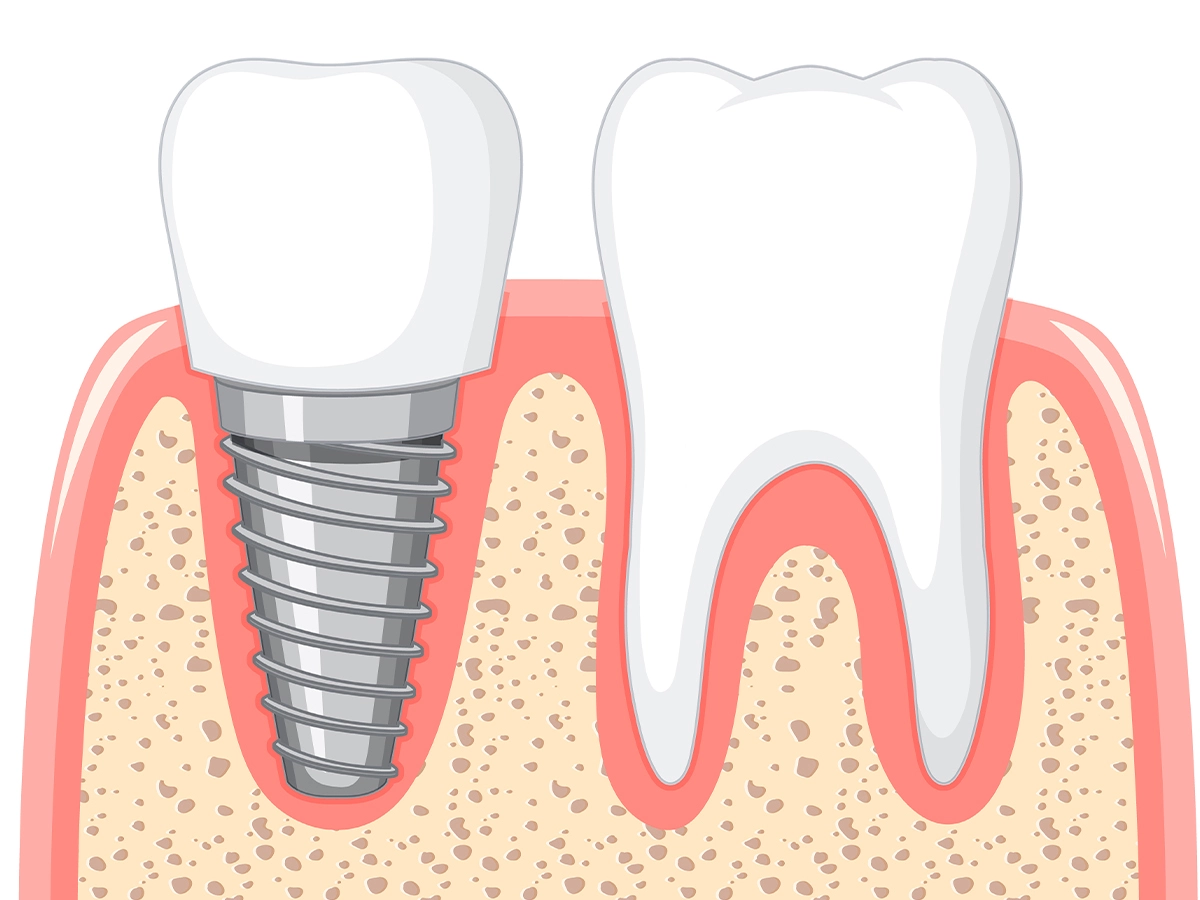Dental implants are increasingly the top choice among dentists and patients alike for replacing missing teeth. The procedure for placing dental implants typically involves a substantial investment, both financially and psychologically. Here is all you need to know about the dental implant procedure:
Types of Dental Implants
Based on their position, there are traditionally two types of dental implants –
Endosteal Implants:
These types of dental implants are the most commonly used ones and drilled directly into the jawbone. They have the appearance of tapered or cylindrical screws and can be used to support one or multiple artificial teeth. The dental crowns are connected to the implant through an abutment that is placed like a cap onto the implant.
Subperiosteal Implants:
These types of implants are used in patients who do not have adequate bone quantity or height to support the implant. The dental implant lies underneath the gum tissue but on top of the bone instead of being drilled into it. The abutment acts as a connector between the dental implant and artificial tooth in the subperiosteal implant as well. These types of implants are very rarely used since they have poor long-term results.

Procedure for Dental Implant
Consultation:
The first step in the dental implant procedure involves an initial consult by your dentist. You will be assessed to find out whether you are a suitable candidate for receiving dental implants. Your dentist will perform oral check-ups and may advise diagnostic tests like X-rays and CT scans. Factors like age, presence of diseases like diabetes, quality of bone health, etc. all play a significant role in determining the longevity and success of a dental implant in an individual.
Surgical Placement of Dental Implant:
Once you have been deemed fit for a dental implant procedure, then the first step is the surgical placement of the implant in the jawbone. The procedure is done under local anesthesia, and the patient is allowed to return home the same day. The surgery usually lasts one to two hours, but times may vary from patient-to-patient and according to the number of implants.
This is followed by a waiting period of 3 to 6 months. This is done to allow osseointegration to take place, a process by which the dental implant completely fuses with the surrounding bone. Osseointegration is essential for the stability of the dental implant and for it to be able to withstand the forces experienced by a natural tooth.
Placement of Dental Crown:
After adequate healing and osseointegration of the dental implant into the jawbone, the dental crown is fitted onto the implant. The dental crown is fabricated in the dental laboratory after the dentist takes an impression of the region where the crown will be placed and sends it to the lab.
Problems That Can Arise with Dental Implants
The success rate of the dental implant procedure is very high, about 98%. However, problems can arise in cases where the expertise of the dentist performing the procedure is questionable. Inadequacies in following post-operative care by the patient may also hinder the success of the dental implant procedure. Infections occurring in the region of the implant due to lack of oral hygiene is one of the most common problems associated with dental implants. This can lead to peri-implantitis, an inflammatory condition that leads to loss of bone around the implant, and eventual failure of the dental implant.
Excessive forces applied on the dental implant due to overloading or due to mechanical injury may damage the implant or hamper its stability. This will also eventually lead to peri-implantitis.
Cost of Dental Implants
Dental implants are usually considered one of the costliest dental treatments. A full set of dental implant-supported artificial teeth can cost tens of thousands of dollars in the US.
The initial investment incurred in getting a dental implant procedure prove too costly for some. However, the wide range of benefits and improvement in the quality of life offered by dental implants makes them a considerably better tooth replacement option as compared to dentures and dental bridges.
Get in touch with your dental insurance provider to enquire what kind of coverage they offer with dental implants. Most dental practices also provide a variety of payment plans that allows dental implants to be an affordable choice for many.

